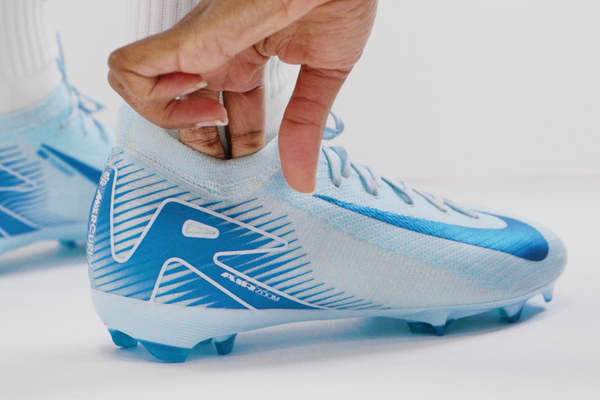| US – Kids' | 1Y | 1.5Y | 2Y | 2.5Y | 3Y | 3.5Y | 4Y | 4.5Y | 5Y | 5.5Y | 6Y | 6.5Y | 7Y |
|---|---|---|---|---|---|---|---|---|---|---|---|---|---|
| EU | 32 | 33 | 33.5 | 34 | 35 | 35.5 | 36 | 36.5 | 37.5 | 38 | 38.5 | 39 | 40 |
| Foot length (cm) | 20.1 | 20.5 | 20.9 | 21.4 | 21.8 | 22.2 | 22.4 | 22.7 | 23.2 | 23.5 | 23.8 | 24.3 | 24.6 |
Metro NSW, VIC, QLD, SA, ACT. Shop Now | Learn More
Kids' shoes
Find your correct size in the charts below.
Scroll horizontally to see more sizes.
Quick guide to measuring
Download & print
Print out our kids' shoes measuring guide. Check the scale with a bank card or ID card to ensure accuracy.
Measure
Use the printed guide to help measure the length of your child's foot. Make sure you measure both feet to the longest points of their toes. If the measurement is between sizes, we recommend sizing up.
No printer? No problem.
Grab a piece of paper and trace your child's feet with a pen. Then, use a ruler to measure from the longest point of their toes to their heel. Use the measurement to find their size in our size chart.
Measure up with our footwear size guide
We've made it easy for you to measure your kids' growing feet.
| US – Kids' | 8C | 8.5C | 9C | 9.5C | 10C | 10.5C | 11C | 11.5C | 12C | 12.5C | 13C | 13.5C | 1Y | 1.5Y | 2Y | 2.5Y | 3Y |
|---|---|---|---|---|---|---|---|---|---|---|---|---|---|---|---|---|---|
| EU | 25 | 25.5 | 26 | 26.5 | 27 | 27.5 | 28 | 28.5 | 29.5 | 30 | 31 | 31.5 | 32 | 33 | 33.5 | 34 | 35 |
| Foot length (cm) | 15 | 15.5 | 15.9 | 16.3 | 16.7 | 17.2 | 17.6 | 18 | 18.4 | 18.8 | 19.3 | 19.7 | 20.1 | 20.5 | 20.9 | 21.4 | 21.8 |
| US – Kids' | 1C | 1.5C | 2C | 2.5C | 3C | 3.5C | 4C | 4.5C | 5C | 5.5C | 6C | 6.5C | 7C | 7.5C | 8C | 8.5C | 9C | 9.5C | 10C |
|---|---|---|---|---|---|---|---|---|---|---|---|---|---|---|---|---|---|---|---|
| Age (months) | 3 | 6 | 9 | 12 | 18 | 24 | 36 | ||||||||||||
| EU | 16 | 16.5 | 17 | 18 | 18.5 | 19 | 19.5 | 20 | 21 | 21.5 | 22 | 22.5 | 23.5 | 24 | 25 | 25.5 | 26 | 26.5 | 27 |
| Foot length (cm) | 9.1 | 9.5 | 10 | 10.4 | 10.8 | 11.2 | 11.6 | 12 | 12.5 | 13 | 13.3 | 13.8 | 14.2 | 14.6 | 15 | 15.5 | 15.9 | 16.3 | 16.7 |

Kids' lifestyle shoe fit guide
Set them up with confidence through every step. Follow these tools and services to find their best fit that feels great on the first try.

Kids' running shoe fit guide
Kids grow as fast as they run. Check out our latest tools and services to find a pair that fits and supports them to the finishing line.
